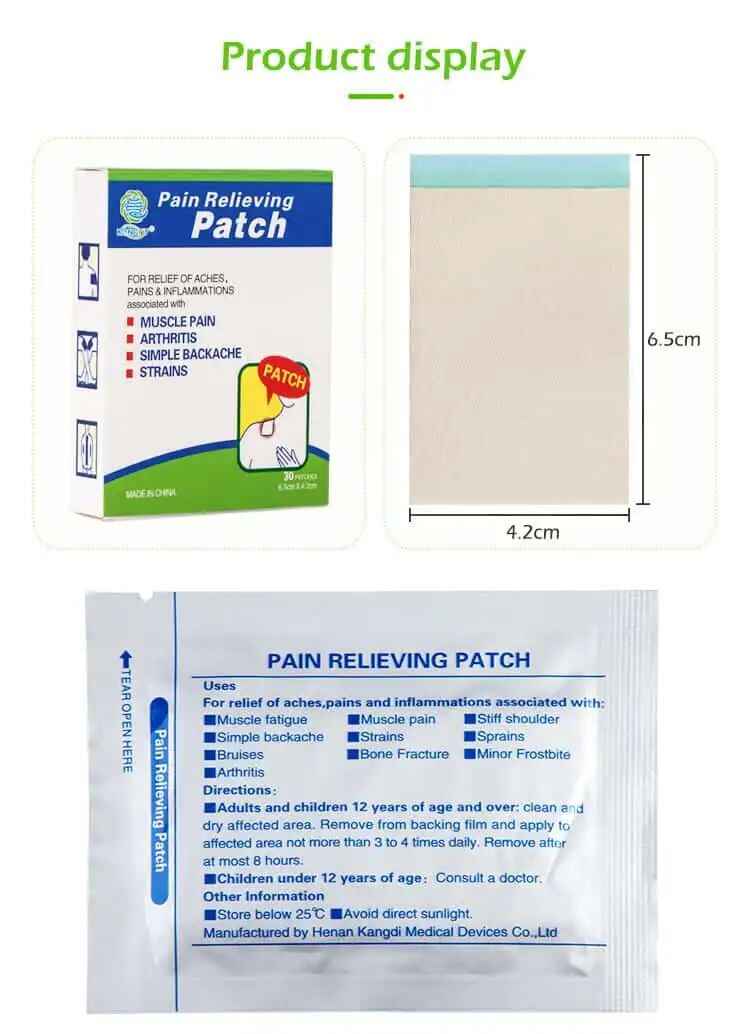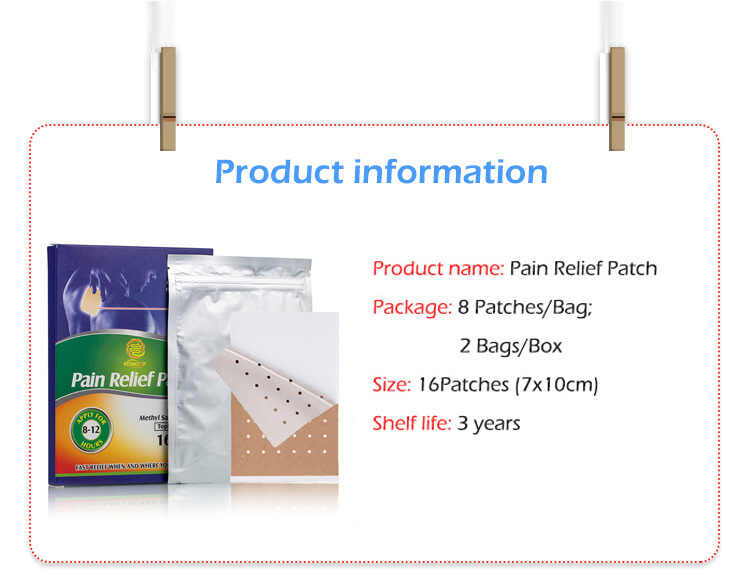How to Build Long-Term and Stable Partnerships with Sports Pain Patches OEM
In the competitive and rapidly expanding market for sports recovery products, establishing a long-term and stable partnership with a Sports Pain Patches OEM is a strategic move for any business looking to scale sustainably. Whether you're launching Custom Sports Pain Patches, expanding with Private Label Sports Pain Patches, or searching for a reliable Sports Pain Patches Supplier, the strength of your OEM relationship will largely determine your product’s success, brand reputation, and market longevity.
This comprehensive guide explores how to build and maintain long-lasting, mutually beneficial relationships with your Sports Pain Patches Manufacturer, highlighting key strategies, common pitfalls, and actionable insights that support strong OEM collaboration.

1. Understanding the Importance of OEM Relationships
Why It Matters:
A reliable Sports Pain Patches OEM acts as more than just a supplier. It becomes your product development partner, quality control ally, and scaling enabler.
Benefits of strong OEM partnerships:
Faster time-to-market for new products
Consistent product quality across batches
Cost savings through efficient production
Collaborative innovation for Custom Sports Pain Patches
When brands and OEMs grow together, success is amplified on both ends.
2. Choosing the Right Sports Pain Patches Manufacturer
The foundation of a stable partnership begins with selecting the right Sports Pain Patches Supplier. Here’s what to look for:
Key Criteria:
Certifications: Ensure they’re GMP-certified, and compliant with FDA, CE, or ISO standards.
Experience: A seasoned Sports Pain Patches Manufacturer understands both regulatory and market demands.
Capacity & Flexibility: Can they scale with your brand and support Private Label Sports Pain Patches or custom orders?
Communication: Evaluate their responsiveness, transparency, and language proficiency.
Pro Tip: Ask to review case studies of long-term clients or request references.
3. Setting Clear Expectations Early On
Why It’s Crucial:
Misunderstandings often arise when business goals and product specifications aren’t clearly outlined.
Action Steps:
Develop a comprehensive product specification sheet for Custom Sports Pain Patches.
Clarify lead times, MOQs (minimum order quantities), sample testing procedures, and packaging details.
Create an OEM agreement covering pricing, intellectual property, non-disclosure clauses, and quality assurance protocols.
Pro Tip: Hold a kickoff meeting to align on production timelines, target markets, and brand goals.
4. Prioritizing Transparency and Communication
A successful OEM relationship depends heavily on transparent and continuous communication.
Best Practices:
Schedule regular video calls or virtual check-ins.
Use shared dashboards or project management tools (like Trello, Asana, or Monday.com).
Provide timely feedback on samples and packaging design.
Pro Tip: Designate key points of contact on both sides to streamline communication.
5. Collaborating on Innovation and Product Development
To stay competitive, brands must continually innovate. That means working with a Sports Pain Patches OEM that supports R&D.
What to Do:
Share market feedback and customer insights with your OEM partner.
Involve the manufacturer early in your product ideation process.
Explore emerging ingredients, delivery technologies, and sustainable materials.
Pro Tip: Choose an OEM that can co-develop proprietary Private Label Sports Pain Patches formulations.
6. Establishing Trust Through Quality Control
Consistency in product quality is key to customer satisfaction and brand credibility.
How to Ensure It:
Request Certificates of Analysis (COAs) for every batch.
Audit production facilities or request virtual tours.
Create a quality checklist that the OEM must follow for every production run.
Pro Tip: Partner with a Sports Pain Patches Supplier that embraces third-party inspections and open reporting.
7. Supporting Mutual Growth and Flexibility
OEM partnerships thrive when both parties see mutual growth.
Best Practices:
Share projected volumes and seasonal demands with your Sports Pain Patches Manufacturer ahead of time.
Consider flexible payment terms or co-investments in packaging upgrades.
Offer long-term contracts or exclusivity agreements to secure better pricing and priority production slots.
Pro Tip: Treat your OEM like a strategic partner, not just a vendor.
8. Managing Risk and Preparing for Disruptions
The global supply chain is volatile. Your OEM relationship must include built-in resilience.
How to Protect Your Business:
Diversify raw material sourcing or ask your OEM about their contingency plans.
Maintain safety stock to buffer against shipment delays.
Establish secondary suppliers for key materials or packaging.
Pro Tip: Include force majeure and risk mitigation clauses in your OEM contract.
9. Investing in Cultural Understanding and Relationship Building
In many global OEM relationships—especially with manufacturers in Asia or Eastern Europe—cultural nuances matter.
Relationship Tips:
Learn basic business etiquette and communication styles of your OEM’s region.
Show appreciation during holidays or key company milestones.
If possible, schedule face-to-face visits to strengthen rapport.
Pro Tip: Long-term partnerships are built on mutual respect, patience, and proactive support.
10. Evaluating Performance and Adjusting the Relationship
Regularly assess the partnership’s performance to ensure alignment with your brand’s growth goals.
Evaluation Metrics:
Product defect rate and returns
Timeliness of production and delivery
Responsiveness to feedback
Innovation contributions
Pro Tip: Hold annual review meetings with your Sports Pain Patches OEM to plan improvements and set new goals.
Conclusion
Building a stable and long-term partnership with a Sports Pain Patches OEM requires more than just a supply contract. It demands strategic alignment, shared vision, open communication, and mutual trust. Whether you’re launching Custom Sports Pain Patches or scaling up with Private Label Sports Pain Patches, choosing the right Sports Pain Patches Manufacturer and nurturing the relationship over time is essential for sustained market success.
By applying the principles discussed above, you can future-proof your pain relief product line and solidify a strong, competitive presence in the sports recovery market.
Related Questions and Short Answers
Q1: How do I choose the best Sports Pain Patches OEM partner?
A: Look for certifications, strong communication, R&D capabilities, and a proven track record of OEM collaboration.
Q2: Can I create unique formulas with a Sports Pain Patches Manufacturer?
A: Yes. Most top-tier manufacturers support Custom Sports Pain Patches development with proprietary formulas.
Q3: What’s the difference between Private Label and Custom Sports Pain Patches?
A: Private Label uses standard formulas with your branding; Custom Patches involve unique ingredients and formats.
Q4: How can I ensure consistent quality from my OEM partner?
A: Implement strict QC standards, request batch COAs, and conduct periodic audits or inspections.
Q5: What risks should I plan for in an OEM relationship?
A: Plan for supply chain delays, regulatory shifts, or raw material shortages. Choose an OEM with risk mitigation strategies.
Q6: How can I strengthen communication with my Sports Pain Patches Supplier?
A: Schedule regular check-ins, use shared tools, assign clear contacts, and maintain open, respectful dialogue.
Q7: Is it worth signing a long-term agreement with a Sports Pain Patches OEM?
A: Yes, if they consistently meet expectations, long-term agreements can offer better pricing, priority service, and joint development opportunities.
Ready to grow your brand with a trusted OEM partner?
Choose a Sports Pain Patches OEM that aligns with your goals and invest in a partnership that scales with your vision. Stability, trust, and innovation—these are the keys to long-term success in the sports pain relief industry.






